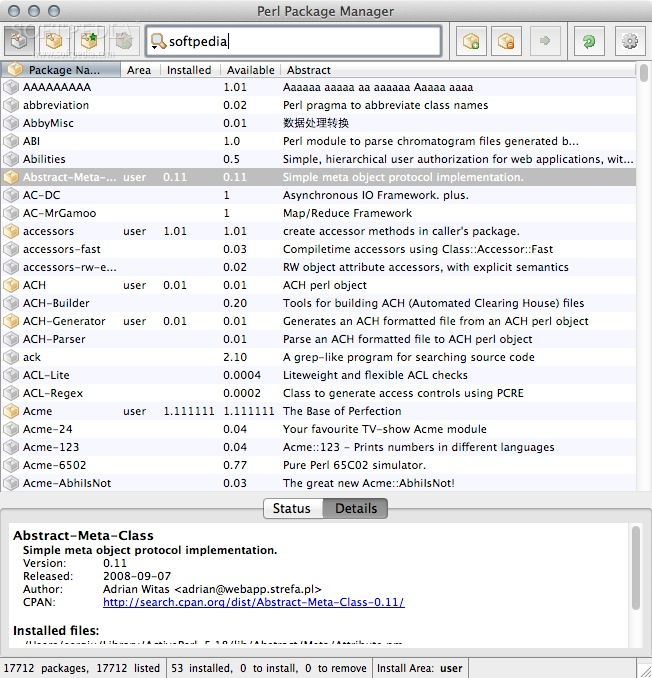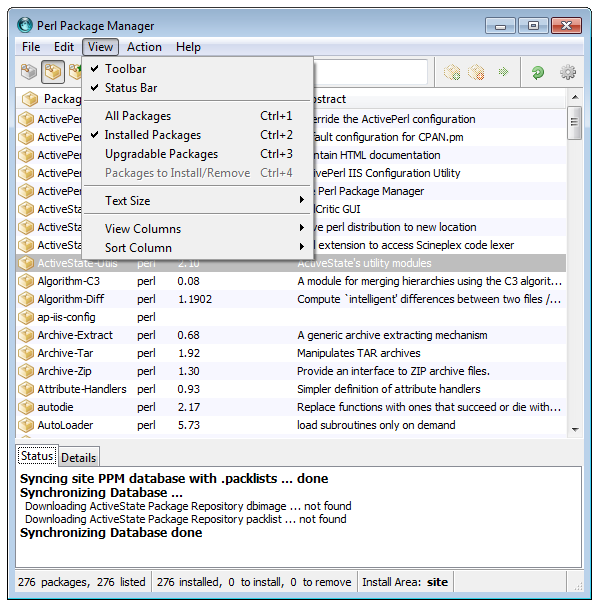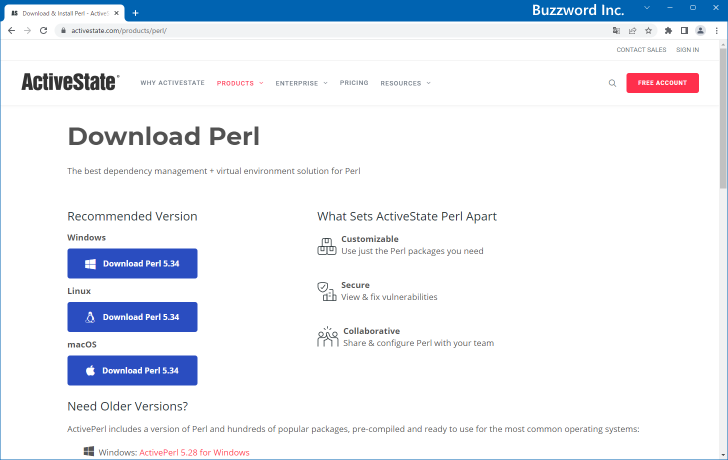
- Activeperl release memory install#
- Activeperl release memory 64 Bit#
- Activeperl release memory free#
- Activeperl release memory windows#
Activeperl release memory windows#
Activeperl release memory 64 Bit#
If you are running the 64 bit version of Windows 2008, ensure that your application pool is configured to run as 32 bit. This link downloads an MSI installer to your machine which you can run.Ģ. At this time, there is a link to version 5.10 for Windows (x86) on this page. Given the above information, here are the steps to get ActivePerl running on IIS 7:ġ. If you use perlis.dll, you may find that response headers sent from your Perl script are added to your response page instead of going back to the client as headers. You should make sure that you use PerlEx30.dll with IIS 7. There are at least two different ISAPI extensions with ActivePerl. After completing the ActivePerl installation, you will need to create handler mappings to associate requests for Perl scripts to the correct ISAPI based Perl interpreter. It just means that any application pool that contains Perl content must be configured to run as 32 bit.Īs of this writing, ActivePerl runs well on IIS 7, but its installer does not properly configure IIS 7 for running Perl scripts.
Activeperl release memory install#
This does not prevent it from running on a 64 bit install of Windows. It's been a while since I've looked at ActivePerl, so I did some research last week to see the state of things and discovered that there are a few things you need to know in order to get it to work on IIS 7:ĪctivePerl is available as an ISAPI for 32 bits only.
Activeperl release memory free#
For many years, ActiveState has provided a free version of ActivePerl that runs great on IIS using ISAPI instead of FastCGI.

It turns out that this is the case for Perl. Sometimes, though, the right tool for the job is not the newest and flashiest thing. Since PHP runs best on IIS with FastCGI, I suppose it was logical to turn to FastCGI for Perl as well. The team has been doing a lot of great work with the Web Platform Installer and Windows Web App Gallery that feature popular PHP applications. This led to some discussion on the team about getting it to work with FastCGI. kbro Posts: 2 Joined: 10.We've had a few people on our forums asking about running Perl on IIS 7. It's worth mentioning that I also had to install NMAKE-1.5 from to get cpan installation to work for the Cache::Cache package, which is a prerequisite of HTML::Mason, which is the whole reason I'm installing XAMPP etc in the first place.įinally, I did try going to to report this bug but this site isn't responding. Either way, removing the stray "c:" at the start of the path allowed cpan to work. Either this file is corrupt in the XAMPP/Perl add-on distribution, or the installer screws it up when it replaces whatever path was there originally with the one I've installed XAMPP to. I eventually traced this is to C:\XAMPP\perl\lib\Config_ containing pathnames beginning with "c:C:\XAMPP\". Having sorted out the tools I ran the install command again, and it failed when it tried to create a directory called "c:C:\XAMPP\perl\html\site\lib\CGI". To avoid this in the future I suggest you ship XAMPP/Perl *WITHOUT* the CPAN/Config.pm file - it gets autogenerated by cpan if it isn't there. I installed equivalent tools from the GnuWin32 distribution (bzip2, gzip, make, less, patch, tar, unzip, wget) and then ran "o conf init" in cpan to reinitialise the config. This is because C:\XAMPP\Perl\lib\CPAN\Config.pm contains paths pointing to tools in the Microsoft VisualStudio. The installation failed because cpan couldn't find "untar". I wanted to install some additional Perl modules from CPAN so I went to my C:\XAMPP\Perl\bin directory, ran "cpan" and tried to "install CGI::Session".



I've just installed XAMPP 1.7.0 on my Dell Inspiron 1545 running Windows Vista Home Premium.


 0 kommentar(er)
0 kommentar(er)
